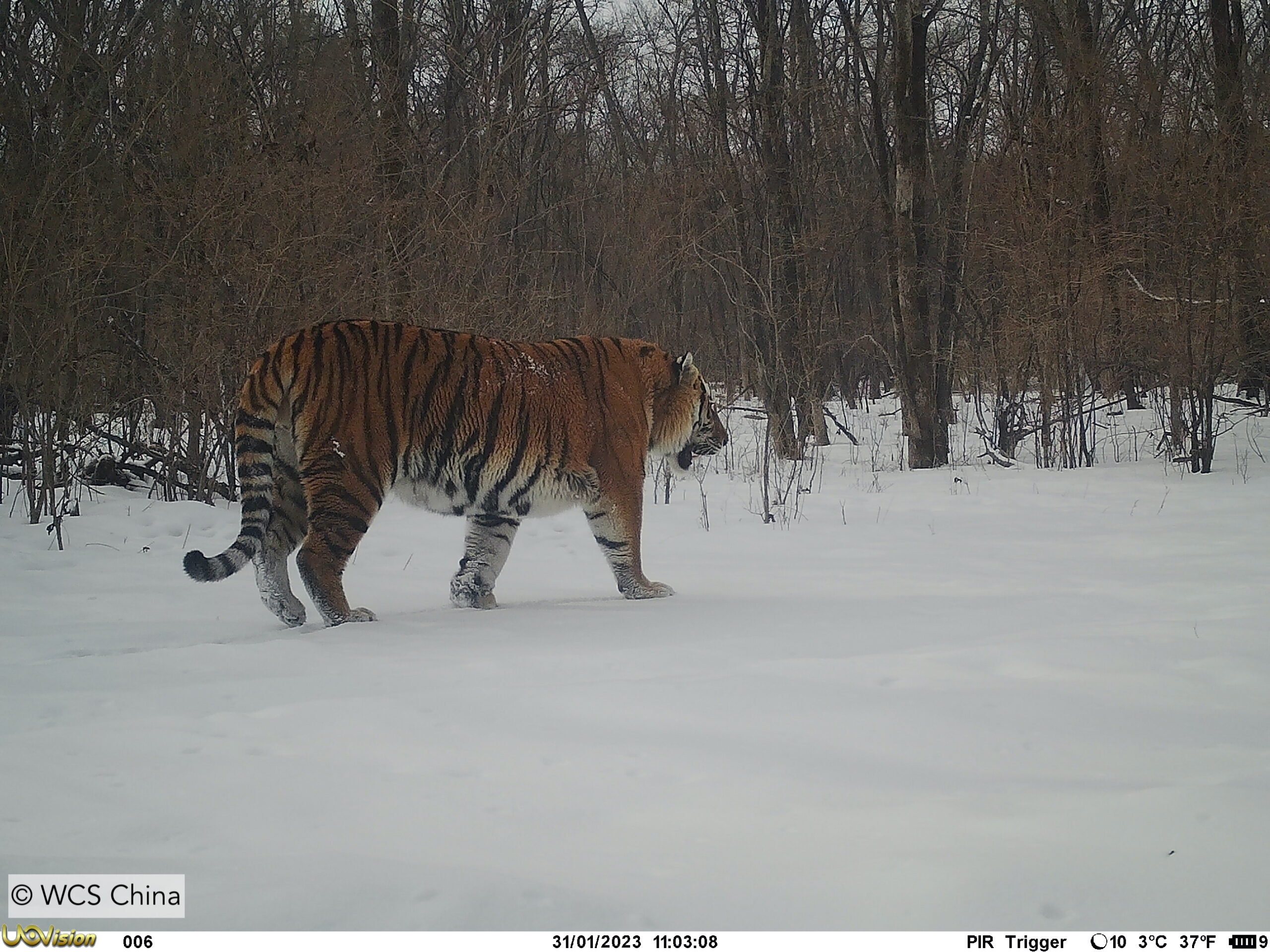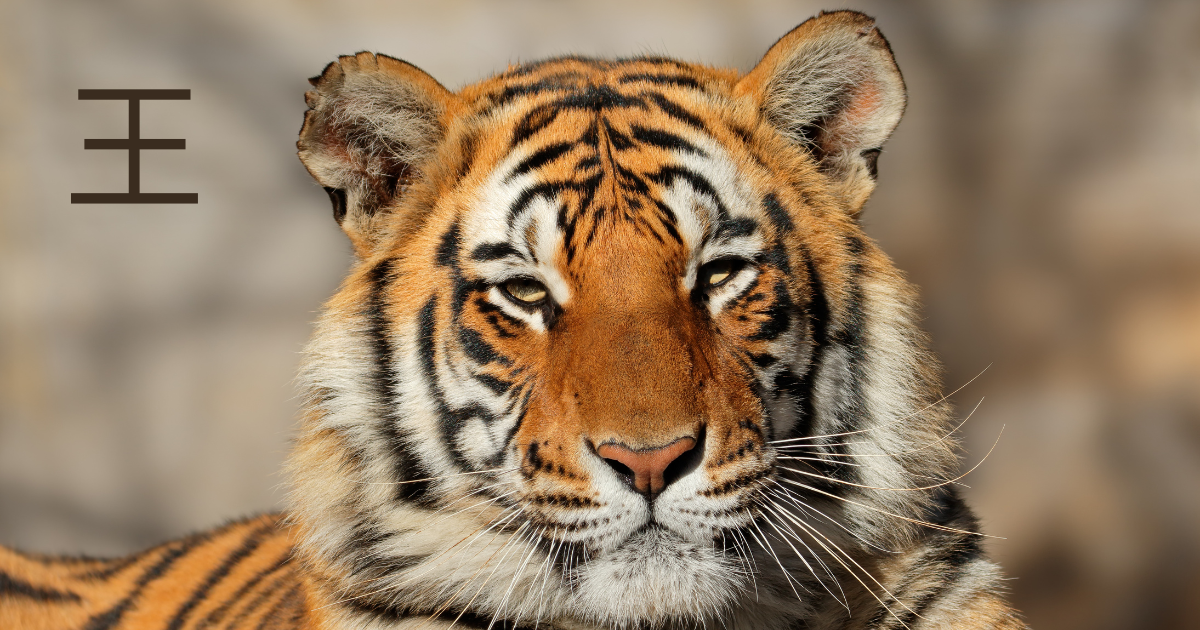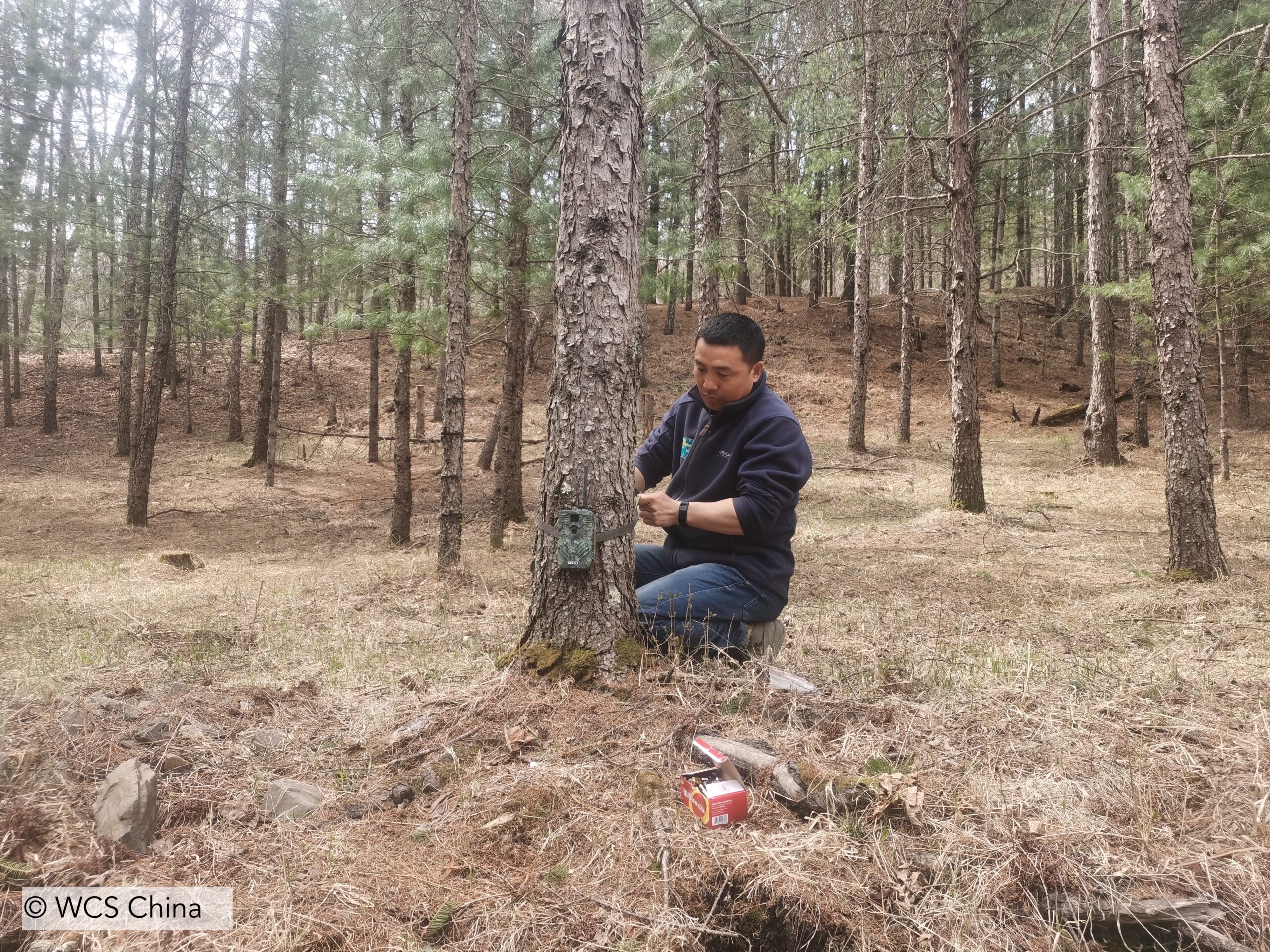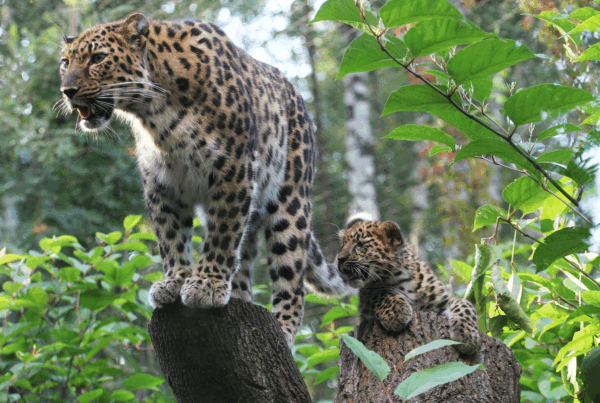
- Tiger’s Royal Symbolism: The tiger stands as a revered symbol in Chinese culture, embodying power and respect that reaches back through history. Its forehead pattern, resembling the character for “king,” adds to its allure as the “king of all beasts.”
- Connection with Medicine: Amid its cultural significance, the tiger faces a complex relationship with traditional Chinese medicine. The use of tiger parts in remedies sparks conservation concerns due to its impact on tiger populations in Asia.
- WCS and WildCats Partnership: Since 1998, the Wildlife Conservation Society (WCS) and the WildCats Conservation Alliance have been involved with the conservation of Amur tigers and leopards in China. Their joint efforts, including the creation of protected areas like Hunchun Nature Reserve, offer hope for these majestic creatures’ future.
King (王)
In the vibrant tapestry of cultural symbolism, few animals command as much respect and admiration as the mighty tiger in China. The allure of this majestic creature goes beyond its raw power; it’s woven deeply into Chinese history and symbolism.
One striking commonality shared by many tigers is the pattern on their foreheads – a pattern that remarkably resembles the Chinese character for “king” (王). This fascinating link has earned the tiger the title of “king of all beasts” in Chinese folklore.

The Tiger’s Realm of Symbolism
In China, the tiger isn’t just an animal; it’s a symbol of bravery, power, and strength. Its reputation as the embodiment of these virtues has deep roots that extend back to ancient times. Revered across the nation, tigers have particularly strong ties to regions like South China and Northeast China, where these magnificent creatures once roamed freely.
Tigers and Traditional Chinese Medicine: A Complex Relationship
While tigers have soared high on the pedestal of cultural symbolism, or perhaps because of this, a darker facet of their relationship with China emerges when we examine traditional Chinese medicine. For centuries, various parts of the tiger’s body, from its bones to its whiskers, have been used in traditional remedies. This demand for tiger products for medicinal purposes has raised significant concerns about the impact on tiger populations across Asia. Find out more about why people poach tigers here.
Protecting tigers in China – A collaboration
China’s breathtaking landscapes cradle some of the world’s rarest big cats – Amur tigers and leopards. Since 1998, the Wildlife Conservation Society (WCS) has been at the forefront of its conservation efforts. Through the partnership with the WildCats Conservation Alliance and collaboration with other stakeholders, the WCS is rewriting the story of these iconic creatures in China.
Collaborating closely with local forestry teams, this dynamic alliance catalysed the creation of Hunchun Nature Reserve (HNR) in 2001 – a crucial corridor for these felines traveling between Russia and China. Beyond establishment, the WCS’s commitment endures. From dismantling snares to implementing intelligent patrol strategies, they’ve nurtured HNR into a haven for tigers and leopards. With their focus now on the Tiger and Leopard National Park, the WCS and WildCats partnership takes centre stage in defining conservation priorities. This joint effort lays the foundation for a promising future, where these majestic creatures can thrive once more.
In the realm of conservation, data is paramount. This is where camera traps emerge as heroes. The WCS, alongside various stakeholders, has meticulously woven an extensive camera trap network across the park’s eastern expanse. These cameras are the silent guardians, offering a wealth of information to shape effective management practices and measure the success of their conservation endeavours. Eleven years of dedicated tracking have yielded remarkable results. From just four tigers and one leopard documented a year prior, the recent data from the WCS 2023 interim report reveals a heartening increase – nine tigers and two leopards now call the Dahuanggou area home.

WCS China monitoring
With every camera click and data point, the WCS, and WildCats Conservation Alliance are rewriting the narrative for these endangered creatures, ensuring that their roar echoes through the landscapes of China for generations to come. You can help us ensure the future of this project by donating today!
Find out more about the project here.





